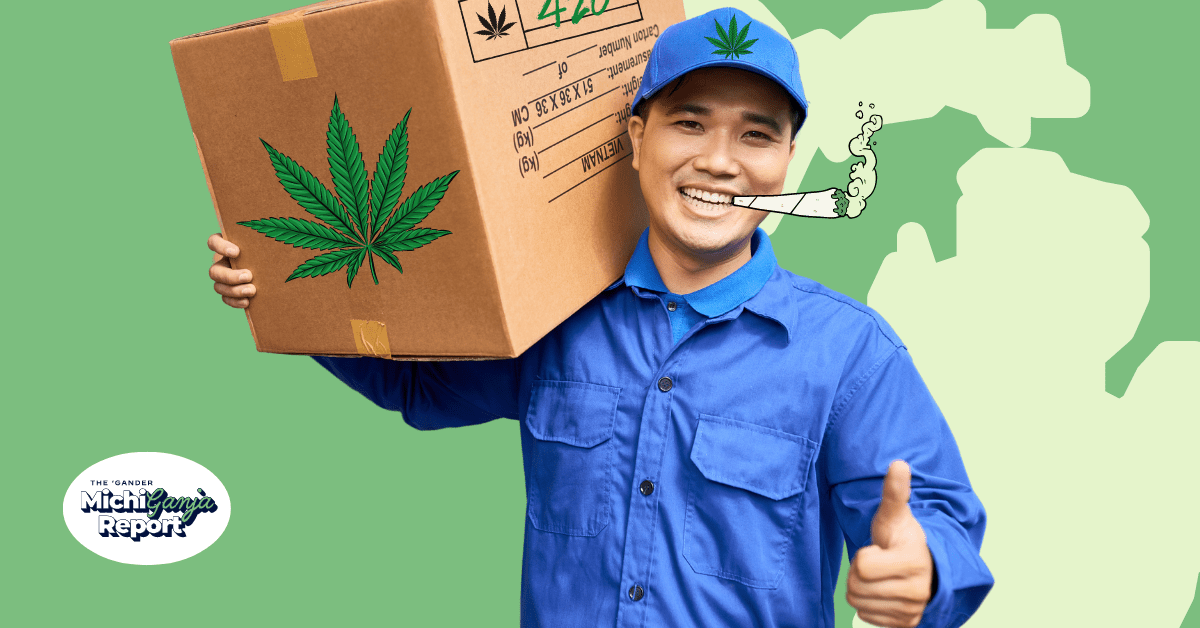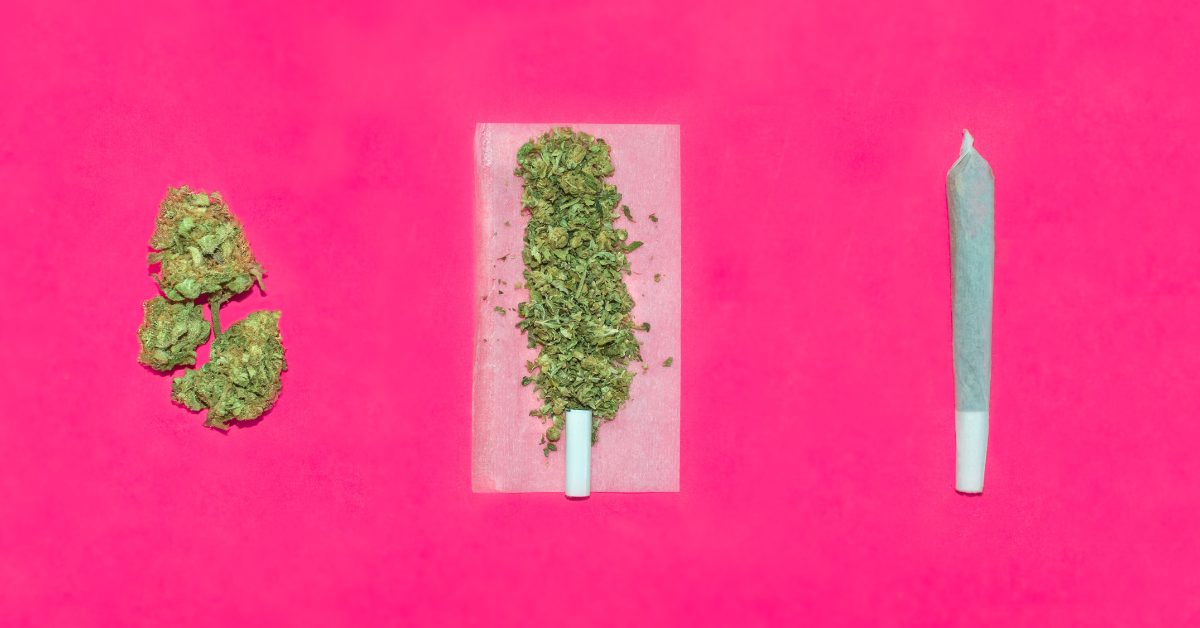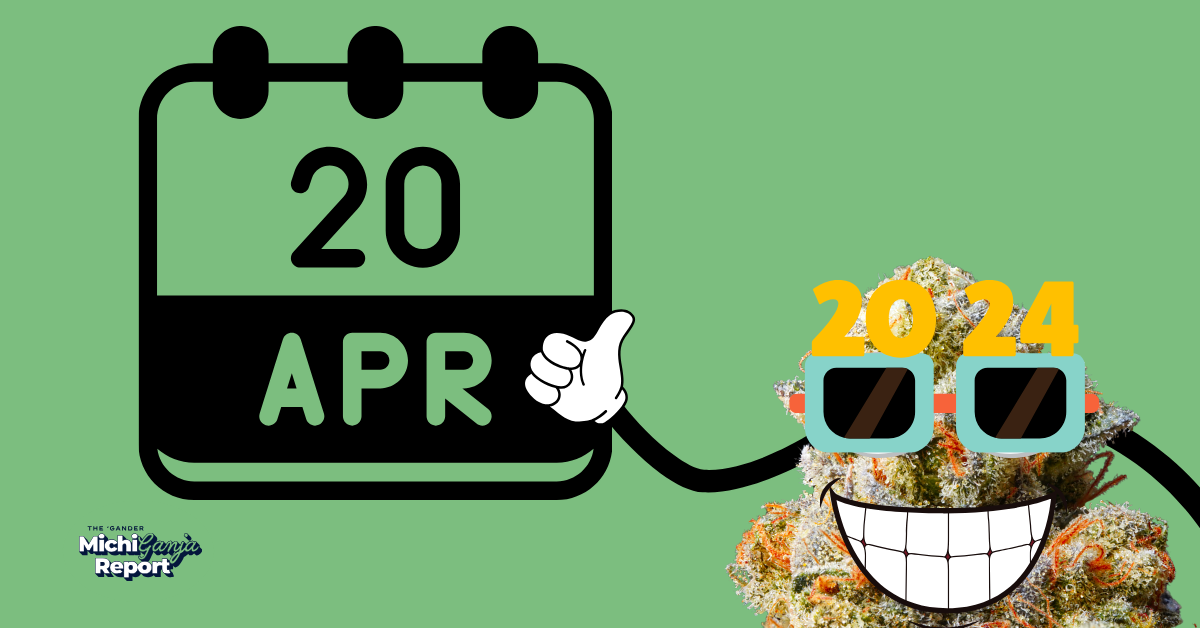
Welcome to Doobies for Newbies, your ultimate catalog of weed wisdom that’s been curated specifically by a Michigan stoner for Michigan stoners. Some of these tips, tricks, and words of general pothead advice come from our personal stash of experience. For other topics, we’re relying on expert insights to be your guide—including from cannabis professionals in Michigan.
Whether you’re sparking up for the first time or consider yourself a seasoned toker, the goal of this guidebook is simply to bring you the 411 on all things cannabis. From storage techniques to product recommendations, it’s your go-to guide for navigating Michigan’s greenery in style.
Bookmark this link. We’ll keep this page continuously updated with fresh cannabis knowledge to help you roll up, light up, and dive into the laid-back world of being a Michigan stoner.
And if you want more news from the world of weed:
Subscribe to the MichiGanja Report. It’s our free biweekly newsletter about all things cannabis.

Is there a difference between marijuana and marihuana?
According to the Michigan Cannabis Regulatory Agency, both versions are acceptable and refer to the same substance. To avoid confusion, many refer to it as cannabis—or simply weed.
While the spelling with a “j” is far more common, Michigan state law still uses the “h” spelling—the same version of the word that was originally used in the Marihuana Tax Act of 1937. State lawmakers would need to vote to amend the law in order to change the spelling.
Dispensary Shopping 101
Last year, the MichiGanja Report released a guide covering just about everything newbies need to know before they start enjoying Michigan’s recreational cannabis industry. It’s a must-read:

Before you go, you may also want to brush up on these key terms:

First-time shopper? We have a special guide just to help save you some cash.
Stuck at work? We also have a guide to the Michigan pot shops that stay open late.
What does “420” have to do with weed?
Legend has it that back in the ancient times (of the 1970s), a group of high school friends in California—who called themselves the “Waldos”—would meet up after school to smoke at 4:20 p.m. Over the years, possibly with some help from the Grateful Dead, 420 has evolved into its own cultural phenomenon and a not-so-secret signal that it’s time to meet up and smoke down.
Nowadays, those three mystical digits are simply synonymous with smoking weed. As such, April 20 (just like 4:20 p.m.) has become a time to celebrate (and smoke) all things cannabis.
With the advent of recreational weed sales, it’s also one of the best days to refill your stash; almost every dispensary in Michigan offers some type of dank discount to celebrate.
Still using ziplock bags? You’re doing it wrong.
When it comes to storing cannabis, picking the right method is essential. Plastic containers like sandwich baggies can work in the short term, but they’ll also quickly dry out your stash.
My tip: Always use glass jars. They’re airtight, light-resistant and can be easily cleaned.
Does weed go bad?
State law doesn’t require marijuana to be labeled with an expiration date. In Michigan, those labels must only provide two key dates—the date it was harvested and the date it was tested.
The absence of an expiration date doesn’t mean your bag of weed will never expire, however. It just means that pinpointing the precise date it will start going bad can be difficult.
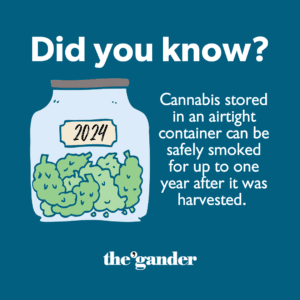
First, it depends largely on how the plant was dried after harvest, as well as how it was packaged. Exposure to direct sunlight and temperature can also play a big role.
As a general rule of thumb, most budtenders recommend smoking your stash within one year of the harvest date. Personally, I’ve found my stash starts to lose its freshness after six months.
Pro Tip: Always ask to see the harvest date on cannabis products before you purchase them.
What’s the difference between a joint and a blunt?
Joints—also known as spliffs or doinks—are marijuana cigarettes that are rolled with very thin rolling papers.
Blunts, on the other hand, are usually rolled with much thicker wraps.
Traditionally, those thick wraps are made of tobacco, often from a freshly gutted Swisher Sweet, White Owl, or another brand of cigar. But since Michigan’s pot shops can’t legally sell tobacco products, dispensary-bought blunts are almost always made from hemp.
Pro Tip: New smokers should start with joints because blunts are much bigger and produce a much harsher smoke. Michigan cannabis companies also have a penchant for rolling their pre-rolled blunts in kief and other concentrates, which often makes them much more potent.
All joints need filters.
Are you tired of getting crumbs in your mouth while smoking a joint?
It’s probably because you’re doing it wrong.
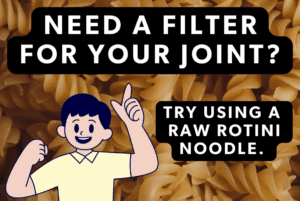
When it comes to rolling joints, having a proper filter is essential. Just about any rolled-up scrap of paper can do the trick—but it’s worth springing for special, pre-cut filters that make for convenient rolling. Those who really want to take their filter game to the next level can even try using a raw rotini noodle. The spiral airflow makes for a surprisingly smooth and even burn.
Why do edibles get me so much more stoned than smoking?
If you haven’t tried a cannabis-infused edible, you should know that the resulting high tends to be much different than the one you get from smoking weed. The effects tend to come on slower and stick around much longer—and it all has to do with a little something called “bioavailability.”
It’s science.
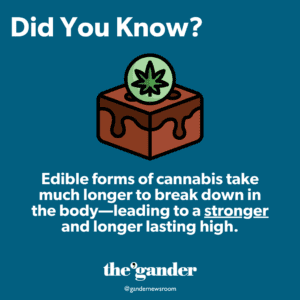
When you take a puff from a joint, THC—the compound responsible for those euphoric effects in weed—quickly travels through your lungs, where it then immediately enters your bloodstream and leads to an almost instantaneous high. Pot brownies are a different story.
After venturing through your digestive system, edibles take their time breaking down, and your liver transforms THC into a different compound called 11-hydroxy-THC. This metabolite is even more potent than its predecessor, which leads to a stronger and longer-lasting high.
Think of it like an amusement park. Smoking weed is like hopping on a roller coaster—bam, you’re up and down before you know it. But with edibles, you’re floating down the lazy river, slowly ascending to the waterfall feature, and enjoying a journey that seems to last for ages.
Why do my hand-rolled joints get me higher than pre-rolled joints?
Short answer: Because you’re probably buying low-quality pre-rolled joints.
Long answer: Because it’s common for marijuana processors in Michigan to fill their pre-rolled joints with shake—or the small pieces of cannabis flower that were once part of larger buds.

Regardless of the trimming method, full flower buds will always be more potent than shake.
Always check the label and ask your budtender whether your pre-rolled joints are made with shake or full flower. Alternatively, joint smokers can always ensure they’re getting full flower joints by just rolling their own—which also tends to be a much more affordable option anyway.
Do THC percentages really matter?
For this cannabis lesson, I’m handing the reins to a seasoned industry professional.
Spencer Donley, 24, is a former shift leader and photographer at The Botanical Co. in Lansing. He said his customers often assume the highest THC percentages translate to the most potent high—but that’s not always the case, and it all has to do with some little things called terpenes.

Donley says:
Terpenes are naturally occurring chemical compounds found in plants and some animals—most commonly identified by scent. The refreshing smell of a pine tree? It’s notable because of a primary terpene found in the pine needles called Pinene. That smooth, relaxing scent of Lavender? That’s mainly from the terpene Linalool. That biting, lemon-like odor found in the peels of citrus fruits? That’s Limonene. There are more than 20,000 known terpenes.
Terpenes are also responsible for giving each cannabis strain their unique and distinctive smells and flavors. But recent research shows that they’re not just about pleasant aromas and tastes. They can also play a big role in the effects cannabis can have on individual consumers, too.
It’s called the Entourage Effect—when THC, the major psychoactive component within cannabis, and the other cannabinoids interact with the terpenes to deliver a unique effect.
Different combinations of terpenes can create different experiences for different consumers. I recommend researching different terpenes, and trying out different strains to find a combination that works for you. Just know that THC percentages aren’t the only thing running the show.
They say “the nose knows,” and it’s true.
The smell of each strain of cannabis can help give us clues as to its potential effects.
Whether you like your cannabis to smell like garlic, mushroom, onions, or sweet and fruity, it’s the terpenes that will help you pick out what is best for you.
Why does weed make me so paranoid?
Studies have long shown that marijuana can increase feelings of paranoia. Scientists have largely attributed those feelings to the way THC tends to overstimulate the human brain, which, in turn, can mess with our natural, fear-based responses—including anxiety and stress.
Research from Leafly also shows that THC impairs the way the brain processes random events through a phenomenon called abnormal salience, in which people can give extra importance to random, sometimes meaningless events and then misinterpret them after they smoke weed.
Studies also show people with a genetic predisposition toward psychotic illnesses and women are more likely to experience paranoia following cannabis use. And, of course, simply knowing that weed causes paranoia has been known to spark a paranoid thought or two among stoners.
So, what can you do about it?
Go slow. Start with just a few puffs and work your way up to your comfort level. Weed can affect everyone differently. A comfortable environment and mood can also help eliminate negative emotions. Research also shows that CBD can help to counter the negative effects of THC.
What’s the deal with microdosing?
Here’s a fun fact: You don’t need to blast off to Mars every time you consume cannabis.

Research shows that weed, even in incredibly small amounts, can provide natural comfort for a variety of ailments. It’s called microdosing—and we have all the details on why more Michiganders are turning to marijuana for relief without getting stoned out of their gourds.
Cannabis for pain relief?
First off, I’m no doctor—and this isn’t medical advice. Second, studies have found there is limited evidence that marijuana actually works to treat most types of acute or chronic pain. Also, you should know that not everyone has the same reactions to the same weed; terpene profiles that work for one person may not necessarily have the same effects for another.
That said, chronic pain is among the most common reasons to get a medical marijuana card in Michigan, and I’ve talked with many who vouch for weed’s ability to relieve pain. In recent years, it has personally helped me find relief during some rather debilitating bouts of lower back pain.
So, here’s some recent research that may help point you in the right direction:
Jointly, a “cannabis discovery” company dedicated to “purposeful cannabis consumption,” found that most people prefer topical cannabis products—like lotions and other ointments—when it comes to relieving their everyday aches and pains. Most consumers also tend to prefer high doses of CBD and THC, with the best results tracked using a dose of 10-20 mg of CBD and 30-50mg of THC. The research also shows the quality of your diet can play a role.
Cannabis for muscle inflammation?
We asked an industry professional for insights on this topic.
Donley says:
Smoking weed with high percentages of cannabidiol (or CBD) can be great for inflammation. Look for a CBD percentage between 3-20%, along with a THC percentage of 10-30%.
For those who prefer edibles, look for products with a 1:1 THC to CBD ratio. It’s also a good idea to add some other cannabinoids into the mix—like CBG, CBC, THCA, and THCV.
Topical treatments can also be helpful for finding relief in specific areas. All cannabinoids help with inflammation, and everyone is different. It’s about experimenting and finding what works.
If you don’t want to feel high, CBD alone can also be helpful for inflammation and muscle relief.
Specifically, I recommend a full-spectrum CBD topical treatment—like Michigan Organic Rub and tinctures from Everyday C. That “full-spectrum” label ensures that it includes CBD (in addition to a large variety of other cannabinoids) that work together to produce the best results.
Why does weed always seem to make for a better workout at the gym?
It’s true! Like so many other things, exercise can be much more enjoyable when you’re totally high. But that’s not just a random observation from some guy at Planet Fitness; it’s science.
Studies show that people who get high before they hit the gym report an enhanced sense of focus and mind-body connection—ultimately making it easier for them to get in the zone and achieve their fitness goals. The study also showed that the effects of cannabis helped make otherwise grueling workouts feel more enjoyable, which can seem to make time go by faster.
Exercise and cannabis intoxication also both produce a similar state of calmness and contentment. And according to research compiled by Jointly, that’s because many of the “feel-good” elements of both exercise and cannabis are mediated entirely through your endocannabinoid system.
Cannabis Growing 101

Last year, The MichiGanja Report rolled out an official guide to everything you need to know about growing weed at home. You can consider this the launching pad to your ganja-growing journey. Just don’t forget to send plenty of samples to our newsroom along the way. You know, for journalism.
Is it OK to smoke weed around my cat or dog?
This one has a blunt answer: No.
Cannabis has long been considered to be safe for human consumption; no one has ever died from ingesting too much weed. But, according to recent research from VCA Animal Hospitals, there is no official “safe” level of cannabis exposure for pets—including for both cats and dogs.
Dogs, in particular, are known to have more cannabinoid receptors in their brains, which means the effects of cannabis are more dramatic (and potentially toxic) when compared to humans.
Just like humans, pets are also susceptible to lung cancer as a result of secondhand smoke.
CBD, however, is an entirely different story. More and more veterinarians are reportedly using products containing CBD to reduce pain, anxiety, gastrointestinal issues, and seizures in pets. Remember: Always consult a veterinarian for help choosing the right CBD product for your pet.
Do I need a tolerance break?
If you’re asking this question, then the answer is probably yes. Anyone who regularly consumes cannabis can benefit from taking a tolerance break—or “T-break”—away from weed to help reset their body’s natural tolerance to the plant. Your bank account will likely benefit, too.
Research from the University of Vermont shows that it takes about 21 days for tetrahydrocannabinol to fully leave your system after you’ve smoked weed. And if you keep consuming cannabis before that clock has a chance to reset, your body will naturally develop a tolerance to the effects, and it will require more and more weed to achieve the same high.
The good news? You can essentially start with a blank slate by taking a break from weed.
The bad news? A true T-break is at least 21 days long—and that can be tough for a daily smoker, especially those who rely on cannabis to ease their chronic pain, anxiety, or insomnia.
Need help? The University of Vermont also has a step-by-step guide for a successful T-break.
Want to learn more about cannabis?
Click here to subscribe to The MichiGanja Report. It’s a free, biweekly newsletter about all things cannabis in Michigan. Got a question about weed? Email me. I’ll find you an answer.

Politics

Elissa Slotkin: Not even birth control access will be safe if Trump wins in 2024
Michiganders may think their reproductive rights are safe, but Trump and Republicans are already plotting their next steps to take away access in...

Why you should care about this year’s Michigan Supreme Court election
Michiganders will soon decide who serves on the highest court in the state—and those two justices will have a hand in making some important...

Dozens march to Flint city hall as the water crisis turns 10 years old
BY KEN COLEMAN, MICHIGAN ADVANCE MICHIGAN—Chanting “Clean water is what we demand,” “Water is a right” and “No justice, no peace,” dozens of people...
Local News

Who makes the best cannabis concentrates in Michigan?
Over the last year, we've asked for reader recommendations for the best dispensaries in Michigan and the best weed, best edibles and best vapes you...

7 quick hits of cannabis news from across Michigan
MICHIGAN—Cannabis is a big deal in Michigan—and there’s never a shortage of newsworthy headlines from the industry as the state inches closer to...




